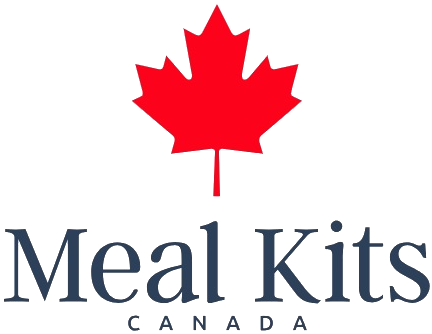Meal Kits Canada
Chefs Plate

What is Chefs Plate
Chefs Plate is a Canadian meal-kit company. Essentially, they deliver boxes (“food boxes” or “meal kits”) of pre-portioned ingredients and recipe cards to consumers, so that cooking a home meal is easier and involves less planning/shopping/waste. Their meals are designed to be cooked in 15-30 minutes, depending on the recipe, and their model emphasizes convenience, affordability, recipe variety, and somewhat “farm-to-table” sourcing.
Founding and Early History
- Chefs Plate was founded in 2014 by Jaime Shea and Patrick Meyer.
- Their mission was to simplify home-cooking by delivering fresh ingredients and easy-to-follow recipes, cutting out much of the prep, planning, and food waste inherent in traditional grocery shopping.
- Early on, they focused on building strong supply channels with Canadian farmers, producers, etc., both to ensure ingredient quality and to build a more efficient farm-to-customer chain.
Business Model & Value Propositions
Here are the core features of their business model, what they promise to customers, and how they try to differentiate:
- Subscription & Flexible Plans
- Customers can sign up for weekly deliveries of meal-kits. They can choose how many meals per week, choose recipes from the menu, skip weeks if needed, and cancel.
- Multiple plan types (for two people, for families), menus tailored to taste (vegetarian, family-friendly, “Speedy & Simple” etc.).
- Recipe Variety
- Each week there are dozens of options. The menu includes vegetarian, meat & seafood, family-friendly, quick prep (“Speedy & Simple”), etc. Some recipes are designed to be ready in 15 minutes, others in about 30.
- Allowing add-ons (extra protein, desserts, sides) in some offerings.
- Pricing & Affordability
- Chefs Plate positions itself as among the more affordable meal kit services in Canada. They have offered “meals for two under $20” and family plans under a certain cost.
- They often run promotions/discount codes etc., and offer “skip week / cancel anytime” flexibility.
- Freshness / Local Supply Chain / Sustainability
- Prioritize Canadian-sourced produce, meats and seafoods, working directly with farmers, purveyors.
- Their model claims that food goes from supplier to customer in about 3 days or less, which helps reduce time in storage, reduce spoilage, reduce waste, etc.
- Portioning is exact (you get what is needed for the recipe) so less over-buying or unused leftovers.
- They participate in food donation programs: surplus food gets donated (e.g. to Second Harvest) rather than wasted. They also partner with organizations promoting sustainable fishing, etc.
- Speed & Convenience
- Recipe cards are designed to be easy to follow. Some kits (especially what they introduced in Quebec) are “15-minute kits” — pre-cut, pre-washed, partially pre-cooked sauces, to reduce preparation time.
- Delivery infrastructure: refrigerated boxes, ice packs, etc., to preserve freshness during transit.
- Menu Flexibility & Dietary Preferences
- Vegetarian options, family-friendly menus, ability to swap proteins, etc.
- Also have “flexitarian” plan that lets customers mostly eat plant-based but not absolutely vegan/vegetarian.
Growth, Expansion & Funding
Chefs Plate has had significant growth since founding, with several rounds of funding and several expansions.
- Funding:
- Early growth rounds: in 2016, raised about CAD $6 million (led by Acton Capital Partners, plus Emil Capital, BrandProject) to support growth, especially fulfillment expansion in Western Canada and hiring.
- Subsequent rounds: a Series B round (including InvestEco) to scale supply chain, infrastructure, reduce waste, invest in tech.
- By late 2017, they had closed a Series C bringing total to about CAD $20 million in funding.
- Expansion:
- Started in as a meal kit in Toronto, Ontario, expanded west to British Columbia, Alberta, Manitoba.
- Also expanded into Quebec and Eastern Canada / the Maritimes. Particular effort to adapt for Quebec (language, culinary preferences).
- Fulfillment centres in Toronto and Vancouver; trying to reduce delivery times and costs by having multiple hubs.
- Scale / Milestones:
- In 2016: delivering 100,000 meal kits monthly, expanded deliveries outside Ontario, etc.
- By late 2017: delivering ~450,000 meals/month, workforce ~350; active subscribers ~76,000.
- On track in 2017 to hit about CAD $50 million in revenue.
Acquisition / Ownership
- In October 2018, HelloFresh (a global meal-kit company of German origin) acquired all shares of Chefs Plate. Chefs Plate became part of HelloFresh’s Canadian operations.
- The rationale: combining operations to create a market leader in Canada, capturing scale/synergies (in procurement, marketing, logistics), and offering different brands/offerings targeted at different consumer segments.
Current Offering & Features (as of recent years)
From what can be gathered via their website and recent marketing:
- Weekly menu selections: over 40 chef-crafted recipes weekly.
- Multiple plan types:
- Meat & Vegetable
- Family Friendly
- Vegetarian
- Speedy & Simple (quick meals)
- Flexitarian plan (some combination)
- Add-ons / customizations: ability to swap protein in some recipes, premium meals, extra sides/desserts.
- Delivery areas: They deliver to ~95% of the Canadian population, including Ontario, British Columbia, Alberta, Saskatchewan, Manitoba, Prince Edward Island, New Brunswick, Nova Scotia. Some areas may still be expanding.
- Pricing: They advertise “Canada’s most affordable meal kit” with meals for two for < CAD 20 in many plans; family for four under CAD 40. Delivery charges vary depending on plan. Promotions are common.
- Waste reduction / sustainability continues to be part of their narrative: portioning, local sourcing, faster supply chain, donation of surplus, etc.
Strengths
Chefs Plate has carved out a number of competitive advantages. Some of them are:
- Affordability: Many meal-kit services are viewed as premium / relatively expensive. Chefs Plate has made affordability a core selling point, which opens up a wider market.
- Large Recipe Variety & Plan Flexibility: With many recipe choices, types of plans, dietary preferences, ability to skip, cancel, swap, etc., they are relatively flexible.
- Strong Supply Chain & Local Sourcing: Their emphasis on Canadian producers, shortening the chain, and freshness helps with quality and helps differentiate. Also may resonate with Canadian consumers who value “local” and “farm-to-table” type claims.
- Operational Reach: The fulfillment centers in multiple locations, and delivery across most provinces (except perhaps some remote areas), gives them a near-national reach.
- Backed by HelloFresh: Being owned by a global meal-kit unicorn gives access to expertise, economies of scale in procurement, technology platforms, operations, possibly better bargaining with suppliers, etc. Synergies in marketing & logistic operations.
- Sustainability / Food Waste Angle: Their model reduces waste (through portioning, fast transit, direct supplier relationships). Their willingness to partner with food-rescue orgs, and sustainable fishing initiatives, etc., boosts their socially conscientious brand image.
- Convenience & Speed: 15-minute meal kits, as well as “Speedy & Simple” recipes, help customers who are time-pressed. For many, meal planning/shopping/prep time are barriers; these help reduce those barriers.
Challenges & Criticisms
Chefs Plate is not without challenges. Some of these are typical for the meal-kit business globally; some are specific to their situation in Canada or revealed via customer feedback:
- Logistics, Freshness & Quality Control
- Delivering fresh produce etc. involves risk: spoilage, damage, shipping delays, missing items, temperature control issues. Some customers report damaged or spoiled ingredients.
- Maintaining consistency across wide geography and in different climates/seasons is hard.
- Cost Margins and Scalability
- Meal kits have historically thin margins: food costs, fulfillment, shipping, packaging, labour. Achieving profitability requires scale, tight cost controls, and high retention.
- Costs for refrigerated delivery, packaging, maintaining cold chain, etc., are non-trivial in Canada with its geography and weather.
- Competition
- Other meal kit companies (GoodFood, HelloFresh itself, etc.), as well as grocery stores, ready-made meal services, take-out, etc., all compete. Some consumers may find cheaper or more convenient alternatives.
- Consumer Behaviour & Retention
- Meal kits demand some cooking, some prep (though minimized). Not every consumer wants that continually. Retaining customers over time (vs trial boxes) is always challenging.
- Also customers are sensitive to price, promotions, shipping costs: perceived value matters a lot.
- Supply Chain Vulnerabilities
- Weather, seasonal variability, disruptions (transportation, labour, regulatory) can affect availability or cost of fresh produce.
- Sourcing locally helps, but also means sometimes limited supply or higher cost than bulk sourcing from abroad.
- Sustainability vs Packaging Waste
- While they reduce food waste, meal-kits also generate packaging waste (insulated liners, ice packs, cardboard etc.), which can draw criticism unless addressed well.
- Geographic Coverage & Delivery Cost
- Some remote/rural areas may be harder to service affordably. Delivery cost to distant zones, or ensuring freshness in transit, is more challenging and may reduce margin.
- Price Sensitivity and promotions
- Many customers expect discounts or promos. If too many discounts are offered to attract new customers, loyalty or margin may suffer.
- Integration with parent company
- Since HelloFresh acquired them, balancing the distinctiveness of Chefs Plate vs overlapping with HelloFresh offerings is important. Ensuring brand differentiation, avoiding cannibalization, etc.
Strategic Moves & Innovations
Some of the notable strategies and innovations Chefs Plate has implemented:
- 15-minute meal kits: Recognizing many Canadians want quicker solutions, they introduced meal kits that reduce prep & cook time. This includes pre-cut/washed vegetables, sauces prepared, etc. First introduced in Quebec but expanded nationally.
- Partnering with local celebrities / localized marketing: Examples include partnerships with Quebec personalities (e.g. Bianca Gervais) to appeal to regional audiences.
- Menu options matching dietary and lifestyle trends: Vegetarian, family-friendly, “Speedy & Simple,” flexitarian plans. Premium upgrades, protein swaps.
- Sustainability measures:
- Direct supply chain relationships, shortening time from farmer to customer.
- Portion control to reduce food waste.
- Donations of surplus to food banks / food rescue orgs.
- Conscious sourcing (e.g. sustainable fishing) etc.
- Scale & Investment in Operations: investment in fulfillment centres, automation, hiring, tech platform, etc., to support growth without compromising service or quality.
Ownership & Market Position
- As of 2018, Chefs Plate is part of HelloFresh Canada. The acquisition was intended to help both scale and improve competitive positioning in Canada.
- The market for meal kits in Canada has been growing; with consumers increasingly seeking convenience, dietary variety, and solutions to meal planning. Chefs Plate has positioned itself as a more affordable, flexible brand in this market.
- They compete against both international brands (e.g. HelloFresh) and domestic ones, and also partial substitutes (groceries, ready meals, restaurants, etc.)
Recent Trends & Website / Current Features (2024-2025 approx.)
From more recent info available via their website:
- Their weekly menus are quite large (40+ recipes).
- They promote being “Canada’s most affordable meal kit” with pricing offers around CAD $3.99 per meal + free shipping + “Dollar Menu” items in some promotions.
- They continue to offer a variety of plan types and dietary preferences.
- Delivery areas remain broad: 95% of Canadian population (provinces listed: Ontario, BC, Alberta, Saskatchewan, PEI, NB, NS, Manitoba) are covered. Some provinces’ remote areas may still be limited.
- Their app and website emphasize ease of use: selecting meals, managing subscriptions, customizing, etc. They have apps (e.g. the “Easy Meal Planner” app) with decent ratings from users.
Performance, Revenue & Financials (Historical)
Some historical metrics give a sense of their growth trajectory (though I did not find very recent profit/loss statements in my search):
- In early years, growth was very fast. As of 2017, they were on track for CAD $50 million in revenue.
- Subscribers grew from ~25,000 to ~76,000 in a year (2016-2017), a ~200%+ growth. Meals per month increased accordingly.
- In 2016, raising ~$6 million, expanding operations / warehouse presence, etc.
- After acquisition, presumably some synergies and cost savings were realized. In media reports, HelloFresh said that combined with Chefs Plate, the Canadian operations could aim for revenues of about CAD $200 million.
Risks & What to Watch
If one is evaluating Chefs Plate (as a business, or as a customer), some key things to watch / challenges include:
- Profitability
Even with strong revenue growth, the meal-kit business is capital-intensive (cold chain, labour, packaging, logistics, customer acquisition). Whether Chefs Plate (under HelloFresh) has been able to turn the corner to consistent profitability is important. - Customer retention & churn
Keeping customers over time (beyond trial boxes) requires value (taste, convenience, cost, service) to remain high. If quality dips, or value perception weakens, customers may cancel. - Cost inflation and supply challenges
Rising costs of food, transport, energy, packaging can squeeze margins. Disruptions (weather, supply chain issues) especially for fresh produce can be hard to manage. - Regulatory / food safety risks
Fresh food businesses always face food safety risks. Managing cold chain, storage, handling, recalls, etc., are critical. Canada’s geography and climate add extra layer of challenge in shipping/delivery. - Competition & substitution
The competitive landscape can get crowded. There are international entrants, domestic players, grocery stores offering meal-solutions, pre-made meals, restaurants, etc. Also, other consumer preferences (e.g. more home-cooked, plant-based, etc.) may shift demand. - Consumer expectations & sustainability demands
Many customers are more aware of environmental impacts (packaging, food waste, carbon footprint). Meeting those demands (or risk negative perception) is important. Also, balancing more sustainable sourcing with maintaining cost/pricing can be tricky.
Strategic Importance in Canadian Food / Consumer Market
Chefs Plate plays a meaningful role in Canada’s evolving food-delivery / meal-kit segment, with several implications:
- It helps shift consumer behaviour: people who might otherwise take out or buy groceries may increasingly rely on meal kits. That has implications for grocery retail, food supply chain, logistics.
- It provides a channel for Canadian producers/farmers/artisans to reach consumers directly; this can help local agriculture and food production economies.
- It intersects with trends: increased interest in convenience, in healthy eating / home cooking, in reducing food waste and environmental impact, in dietary diversity (vegetarian, flexitarian etc.)
- It’s an example of how subscription / direct-to-consumer (D2C) food businesses are working in the Canadian context, facing the challenges of large geography, cold climates, regulatory environments, etc.
What’s New / Recent Developments
- Chefs Plate has ramped up menu sizes, promotional offerings, and has refined its kitchen / delivery operations. The recent website offering shows quite large menu sizes and flexible dietary plans.
- Increased focus on sustainability / reducing food waste: beyond just portioning, also using demand forecasting so suppliers can plan better and reduce over-production.
- Flexitarian plan: in response to growing consumer interest in plant-based or plant-forward diets.
Summing Up
Chefs Plate started as a Canadian startup with a strong proposition: fresh, pre-measured ingredients delivered with recipe cards, making home cooking easier and less wasteful. Its early growth was fast, backed by venture capital, strong supply chain and recipe innovation. It expanded across most provinces, invested in fulfillment, and built a loyal customer base.
The acquisition by HelloFresh gave it access to global scale, technology, sourcing power, and presumably more capital and operational strength. As of the latest data accessible, it continues to position itself as one of the more affordable and flexible players in the meal-kit space in Canada, especially appealing to customers wanting convenience without paying premium prices.
However, like many meal-kit services, Chefs Plate must continuously balance cost, quality, and customer expectations. Ensuring consistency of product, freshness, and service while keeping prices competitive is a heavy lift. Their sustainability and waste reduction efforts are strategically important, both from a cost and brand perspective.
From a consumer’s point of view, the value proposition is quite strong: a wide variety of meals, clarity in recipes, flexible plans, speed (especially with 15-minute kits), and good reach (deliveries to most provinces). But whether that value holds depends on the quality of ingredients, delivery performance, customer service, and whether there are unexpected costs (shipping, substitutions, etc.).


